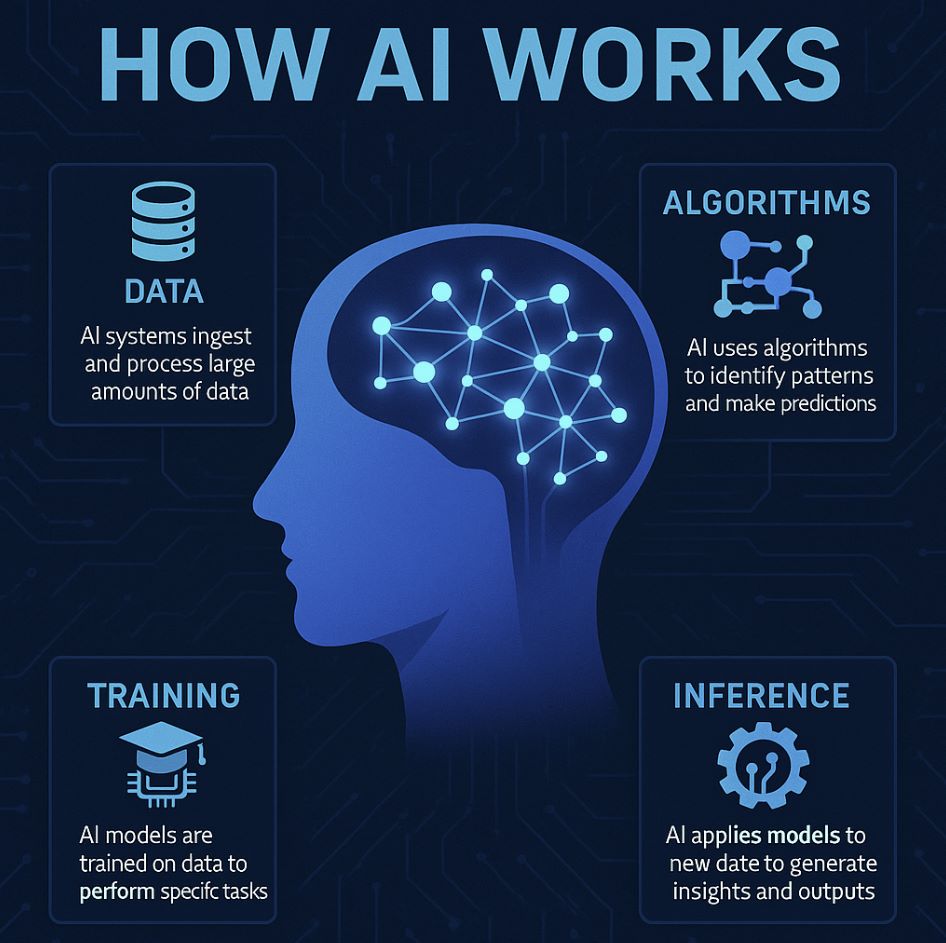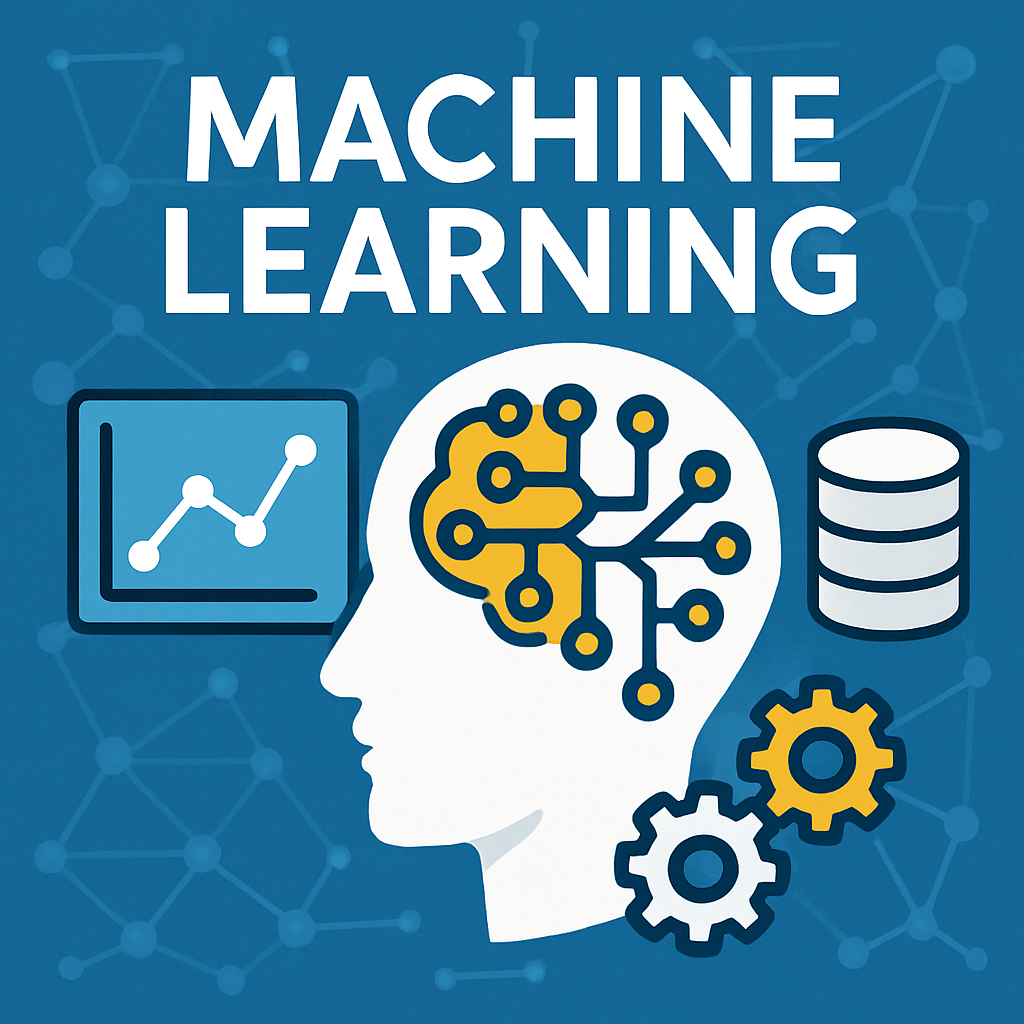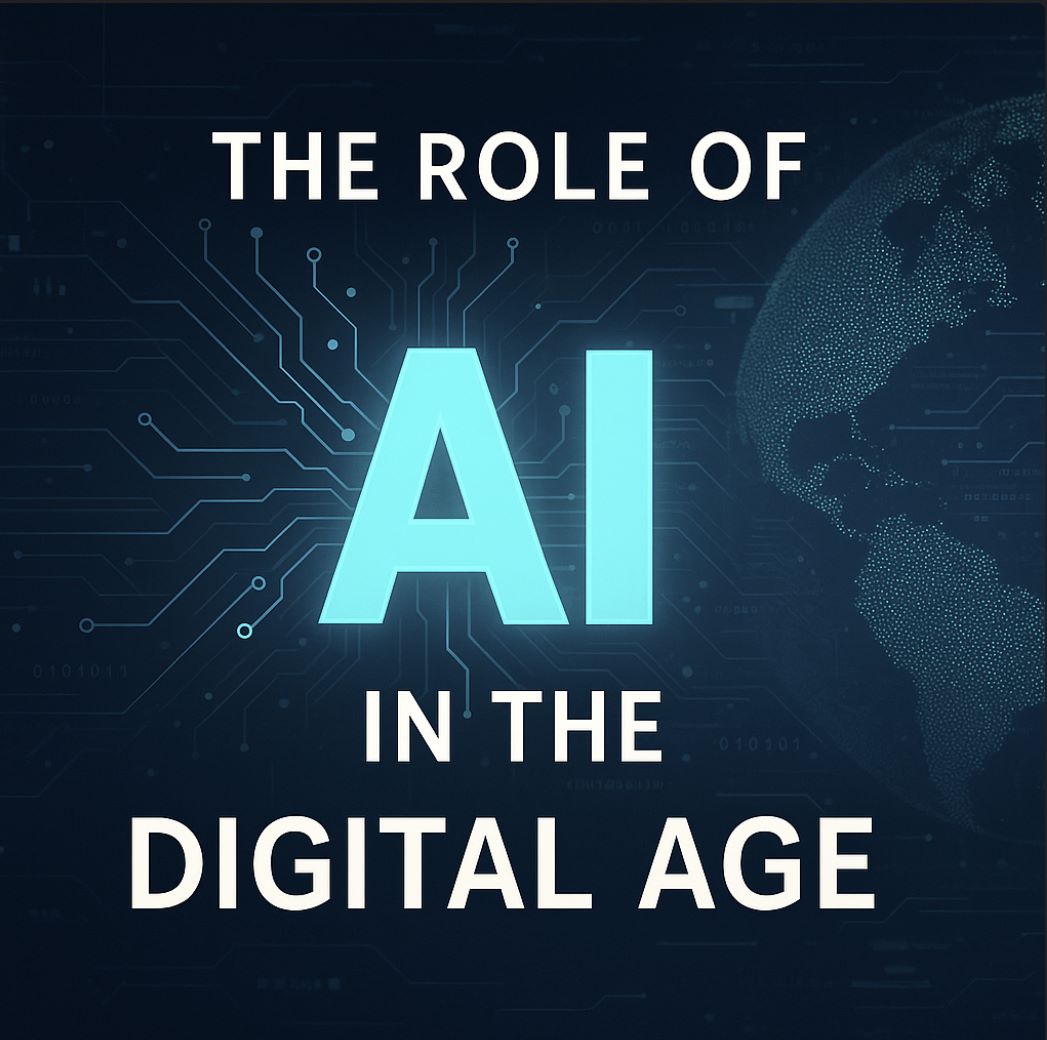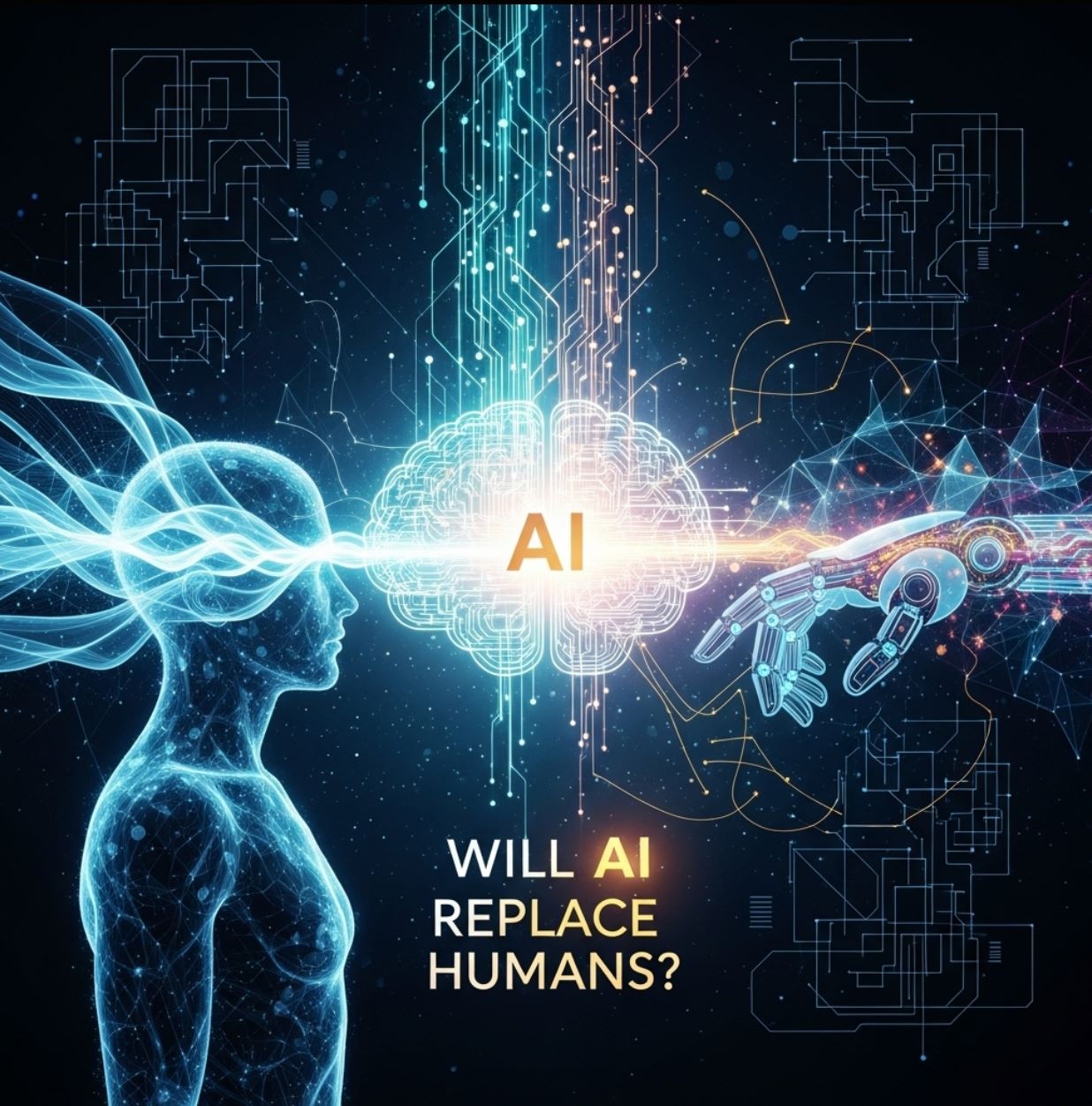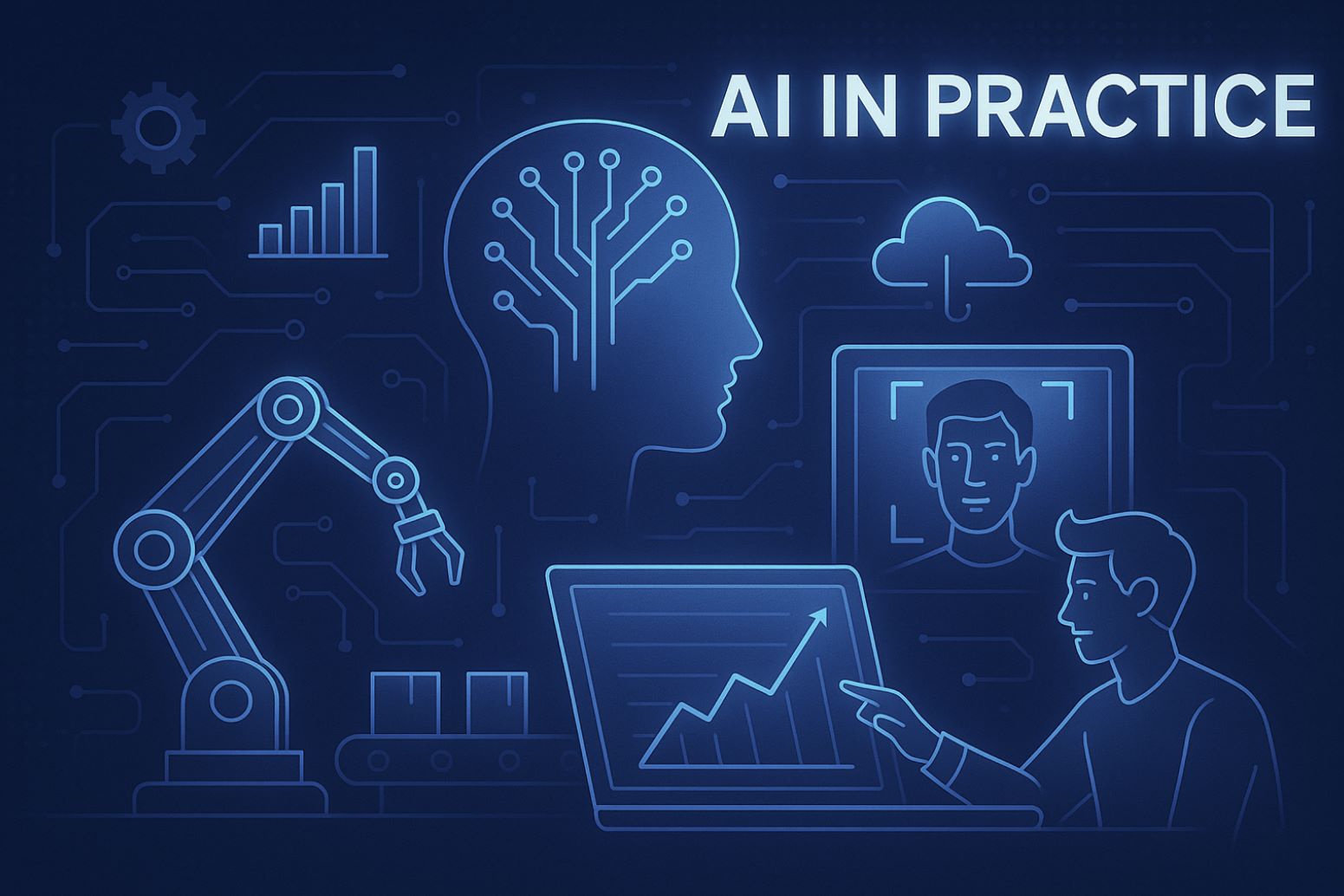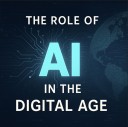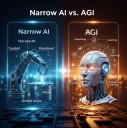Artificial intelligence (AI) is increasingly appearing in our daily lives, from the movie recommendations Netflix suggests to self-driving cars like those from Waymo. Have you ever wondered how AI works? Behind every smart application is a process that allows machines to learn from data and make decisions.
In this article, we will explore an easy-to-understand explanation of the principles behind how AI works, focusing especially on machine learning systems, which are at the heart of most modern AI.
AI “learns” and makes decisions based on data
At its core, AI operates by learning from data. Instead of being programmed with fixed rules for every situation, AI systems (especially those using machine learning) are provided with large amounts of data and automatically discover patterns or hidden rules within that data.
Then, they use what they have learned to predict or make decisions when encountering new data. This process is similar to how humans learn: we observe many examples, draw conclusions, and then apply that experience to new situations.
For example, if you want to teach an AI to distinguish between cat and dog images, you would collect thousands of labeled photos of cats and dogs (e.g., which images are cats and which are dogs). The AI algorithm will analyze this huge dataset to identify features that differentiate cats from dogs – such as cats having whiskers, different facial shapes, etc. During training, the system gradually adjusts internal parameters to improve its accuracy.
As a result, the AI forms a model capable of recognizing whether an image is a cat or a dog. When given a new (unseen) image, the model will predict whether it is a cat or dog based on what it has learned. If the prediction is wrong, the AI can be fine-tuned (using mathematical algorithms) to improve accuracy next time.
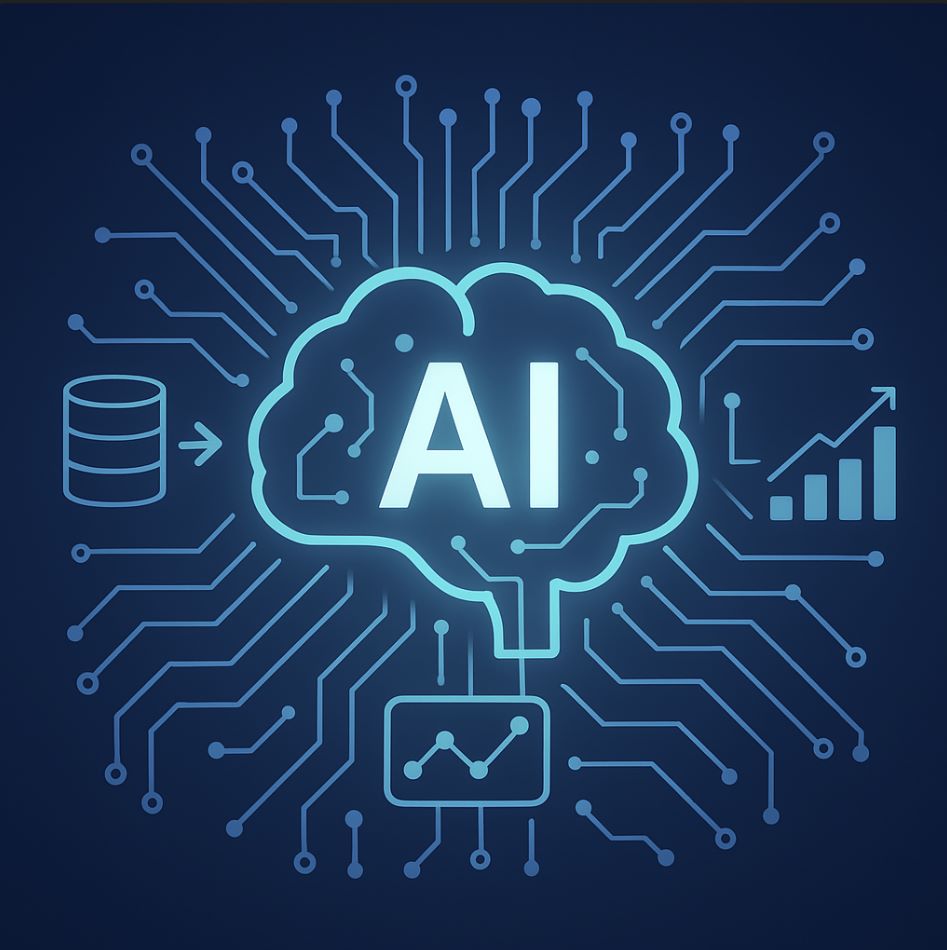
In simple terms, the AI learning and operation process typically includes the following key steps:
-
Data Collection (Input)
First, AI needs input data to learn from. Data can come in many forms: numbers, text, images, audio, etc., and is usually carefully collected and prepared. For example, to train an AI to recognize cats, you need to gather tens of thousands of cat (and non-cat) images and label them accordingly. The quality and quantity of data at this stage are crucial – the more diverse and abundant the data, the better the AI learns.
-
Model Training (Learning/Training)
Next is the phase where the machine learns from data. The input data is fed into a learning algorithm (machine learning algorithm). This algorithm searches for patterns or correlations in the data and gradually adjusts internal parameters to fit the data.
In the case of artificial neural networks (common in deep learning), training means adjusting the weights of connections between neurons through many iterations. The AI continuously tries to predict on the training data and self-corrects based on the difference between its prediction and the actual result (this process is called backpropagation in neural networks).
The important point is that at this stage, AI learns from experience (sample data), similar to how students practice exercises: making mistakes, learning from them, and adjusting.
-
Making Predictions/Results (Inference)
After training, the AI has a trained model. Now, when it receives new input data (which it has never seen before), the AI can apply the learned model to make predictions or decisions.
For example, after training, an AI model that distinguishes cats and dogs can look at a new photo and predict “this is a cat” with a certain confidence. Similarly, an AI trained on banking transaction data can predict which new transactions are fraudulent; or a model trained on medical data can suggest diagnoses for new patients. This phase is called inference – AI applies learned knowledge to real situations.
-
Feedback & Improvement
An important feature of AI (especially machine learning systems) is the ability to improve itself over time. If AI produces results and receives feedback on accuracy (e.g., humans indicate whether the prediction was right or wrong), it can adjust the model to better fit the data.
Returning to the cat/dog classification example: if the model misclassifies some cases (e.g., mistakes a dog for a cat), engineers can add more data on difficult cases or adjust the model’s architecture/hyperparameters so the AI learns more. Through continuous updates like this, AI becomes increasingly accurate and intelligent over time.
This step is like correcting homework based on teacher feedback and learning from mistakes. For some specialized AI systems (like reinforcement learning in games), self-adjustment happens continuously during operation: AI tries actions, avoids those that lead to poor results, and reinforces those that work well.
Overall, AI systems operate by combining three main capabilities: learning from data, applying logic to infer results, and self-correcting from errors. During the learning phase, AI collects and extracts information from data (creating “knowledge”).
During the inference phase, AI uses the learned knowledge to handle new situations and produce outcomes. And through self-correction, AI continuously refines its operation to improve accuracy. This combination of learning, reasoning, and self-adjustment forms the power of modern AI systems.
A simple example illustrating how AI works
Let’s consider a real-world example to better illustrate the above process: an AI chatbot that automatically replies to messages. Suppose you want to build a chatbot that supports customers and can naturally answer questions in Vietnamese.
- Data Collection: You need a huge dataset of conversations to teach the chatbot to understand language and how to respond. This data might be millions of sample questions and answers from previous customer service chats or cleaned data from the internet (forums, social networks). Each question is paired with a correct answer (label) for the chatbot to learn from.
- Chatbot Training: You select a language AI model (e.g., a large Transformer neural network) and have it “read” the entire collected conversation dataset. The model will learn how to link questions with appropriate answers and how to use natural, fluent language. Gradually, through each iteration, the chatbot improves its ability to understand context and respond appropriately. It learns that when a customer asks “I forgot my password, what should I do?”, the answer should guide password recovery rather than an unrelated response. This process is similar to a new employee reading thousands of Q&A scripts to master the job.
- User Response: When deployed, a customer inputs a new question (which the chatbot has never seen before). The chatbot will analyze the question, extract the main intent (e.g., the customer is asking about password recovery) based on what it has learned, then generate an appropriate answer based on its accumulated knowledge. If well-trained, the response will be natural and accurate, similar to a human-written reply.
- Improvement Over Time: After each interaction, you can provide feedback on whether the chatbot’s answer was correct or incorrect (based on customer feedback or support staff evaluation). If the chatbot’s response is unsatisfactory, this interaction data is added to the training set for the next improvement cycle. Thanks to this, the chatbot continuously enhances its knowledge and responses. This is the feedback loop that helps AI self-improve.
This example clearly shows how a practical AI “learns” and operates: learning from past data to apply to future situations. Whether classifying cats/dogs or answering customer questions, the fundamental principle remains the same.
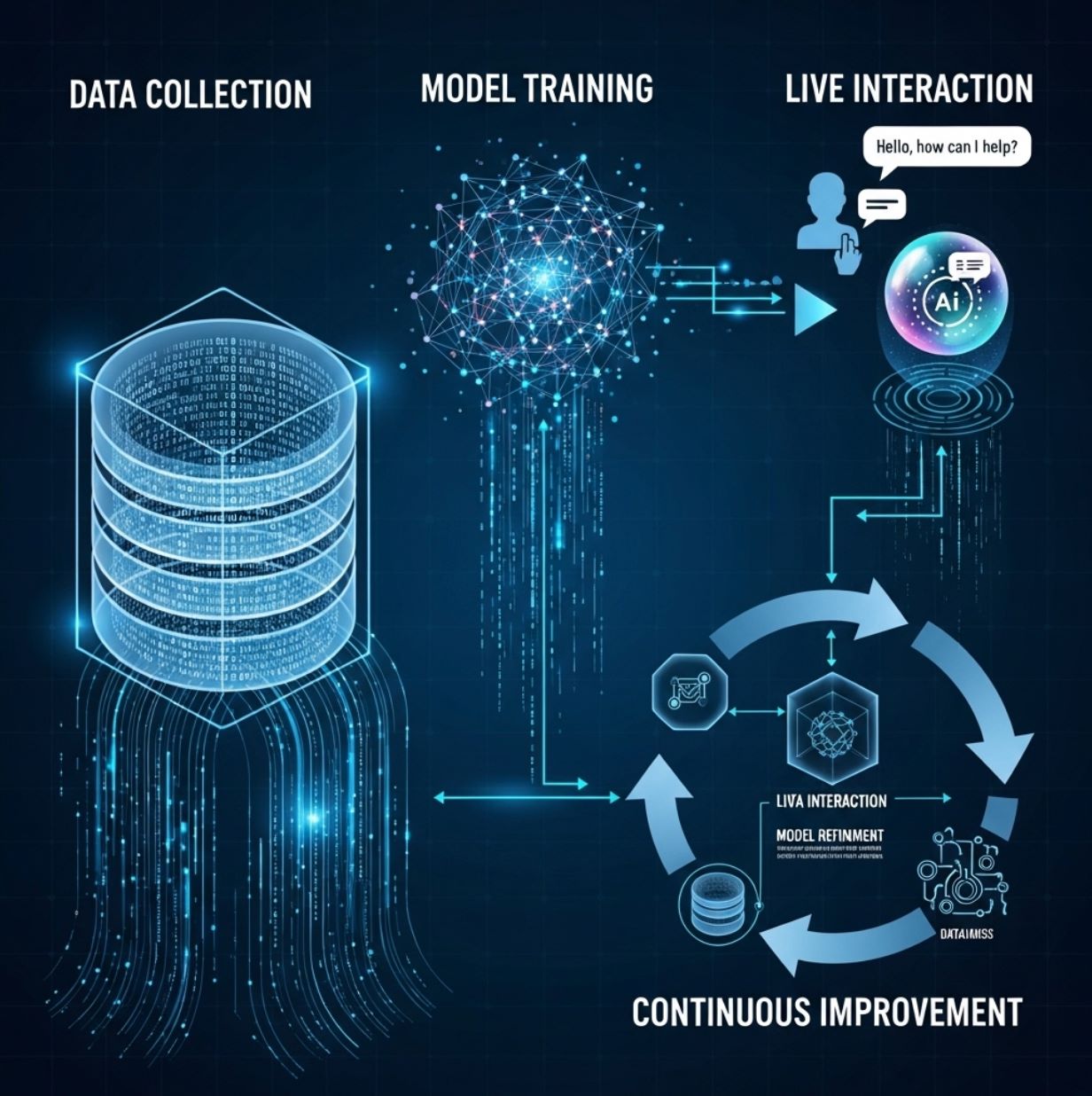
How does generative AI work?
A recent prominent trend in AI is Generative AI – AI systems capable of creating new content such as text, images, or audio that never existed before. So how does generative AI work, and what makes it different?
In fact, generative AI is also based on deep learning from massive data, but instead of just predicting or classifying, the model is trained to generate new outputs based on learned patterns.
Take the example of a large language model like ChatGPT: this model is trained on billions of words of text (books, articles, websites) to learn relationships between words and sentences. Its structure is a very deep neural network (with tens of billions of parameters) capable of predicting the next word in a sentence.
When used, instead of replying with pre-stored answers, ChatGPT creates new responses by selecting each next word based on learned probabilities. The result is a fluent text that reflects the language style from training data but with entirely new content.
In other words, Generative AI systems like ChatGPT or AI art generators (Midjourney, DALL-E) work by deeply learning the “language” of their domain (human language, images, music, etc.) and then building new products on demand based on their learned understanding. They are equipped with very large deep learning models – called foundation models or large language models (LLMs) – trained on massive datasets using special algorithms (such as the Transformer architecture in natural language processing).
This allows programs like ChatGPT or Midjourney to generate new content (text, images, music, etc.) based on learned knowledge, rather than just selecting a pre-existing answer. For example, when you ask “write a story about a cat who knows programming”, ChatGPT draws on its understanding of language and countless stories it has read to creatively produce a completely new story based on your prompt.
The special feature of generative AI is that it not only recognizes or analyzes but actually creates to some extent. Of course, this creativity is still based on what the AI has learned – it combines and transforms patterns it has seen to create something new. But the results can be very diverse and rich, making generative AI a powerful tool in content creation, design, entertainment, and many other fields.
>>> Click to learn more about:
The history of the formation and development of AI
Common Types of Artificial Intelligence
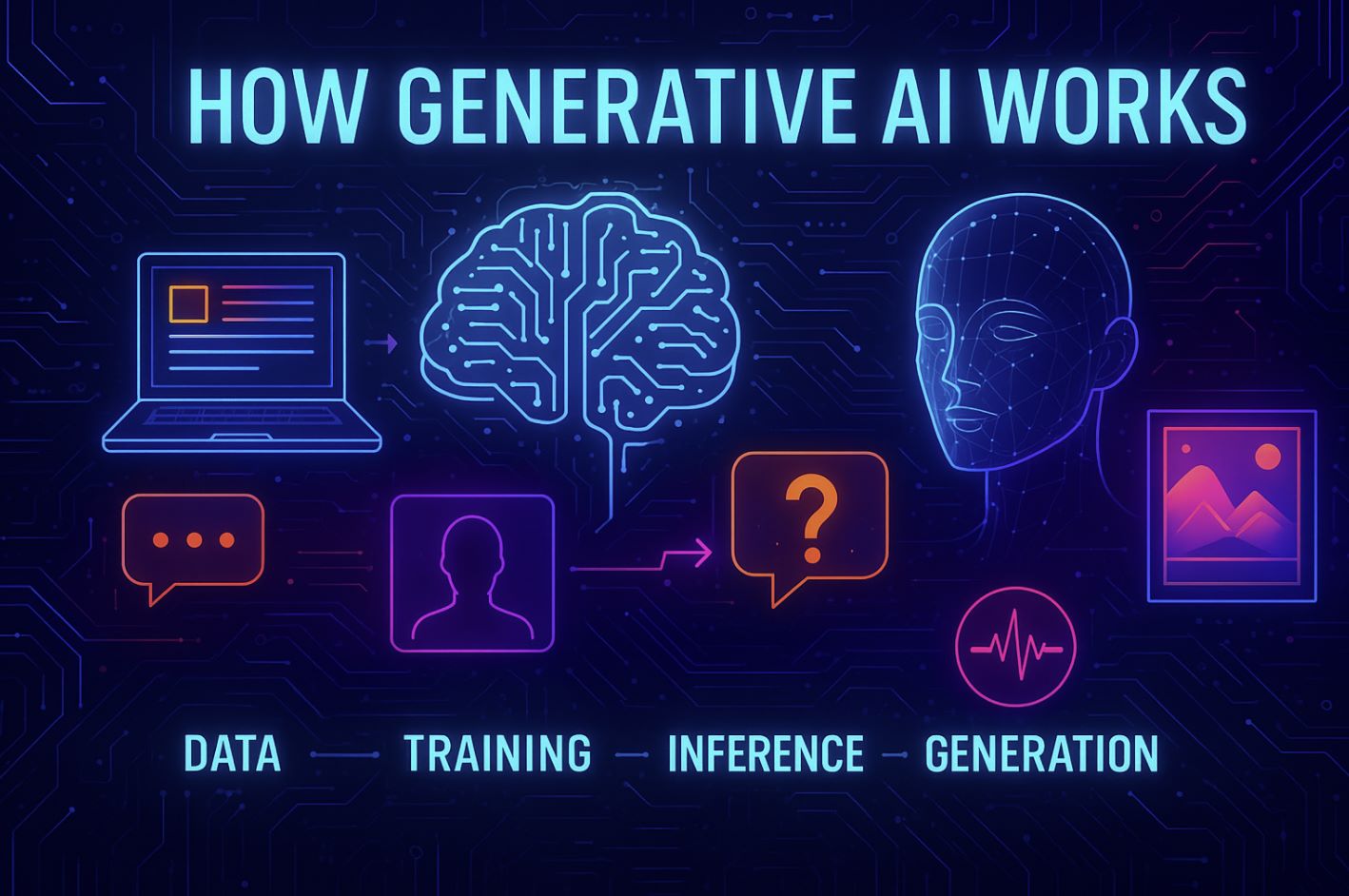
In summary, AI works by learning from experience (data) just like humans learn from experience. Through training, machines gradually generalize knowledge from sample data and form models to apply later.
Although underlying algorithms may vary – from simple decision trees to deep neural networks with billions of parameters – the common goal of AI is to discover hidden patterns that help solve problems. Thanks to massive data and powerful computing today, AI has achieved remarkable results, from accurate image and voice recognition to the ability to automatically write text and create art.
We hope this explanation gives you a clearer and more intuitive understanding of how AI “thinks” and operates behind the screen. AI is no longer a mysterious “black box” – it is essentially the result of a process of learning from data and trial and error, continuously improving, much like how humans acquire knowledge and skills.
Follow INVIAI to stay updated with the latest AI knowledge!


